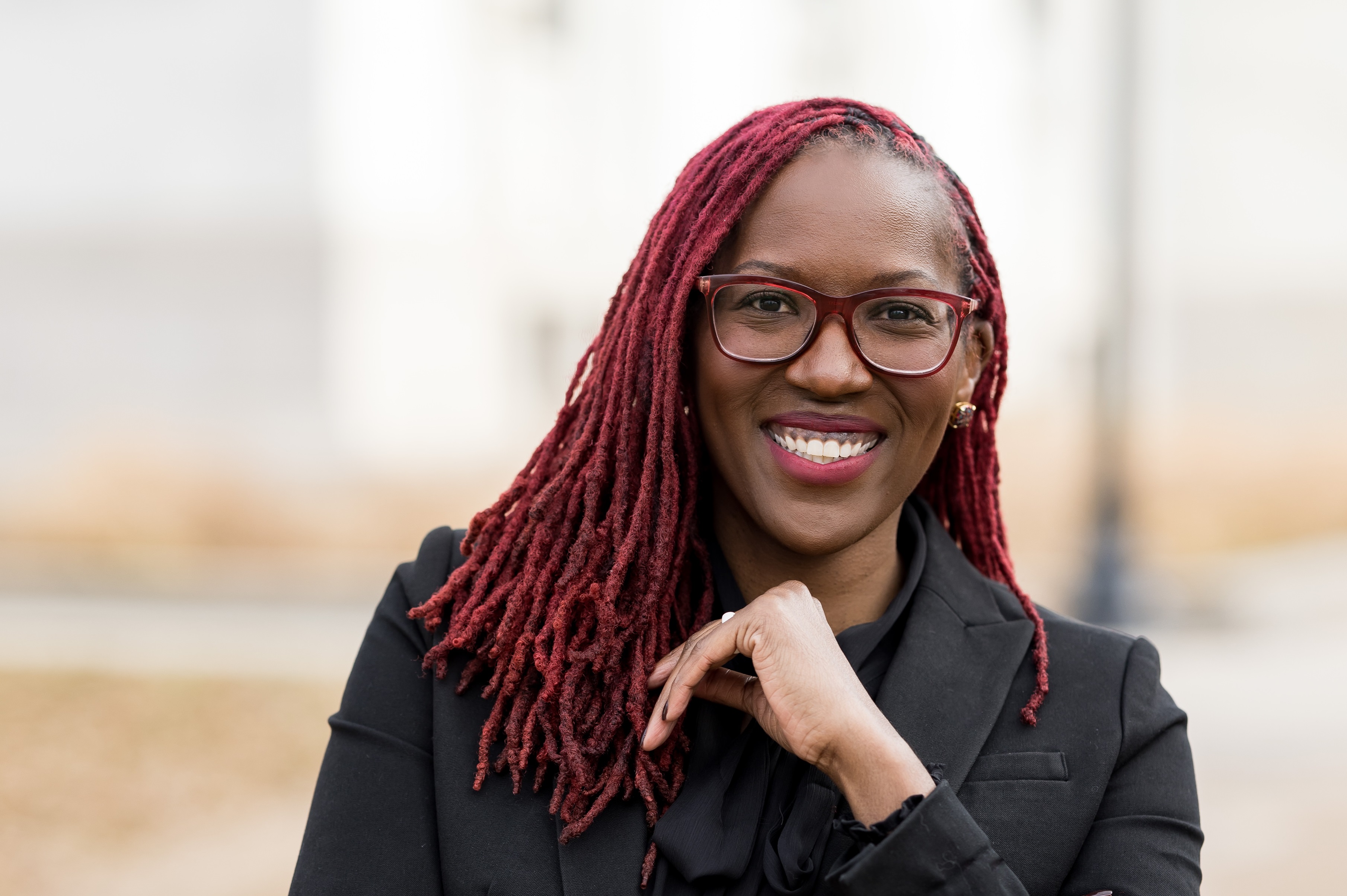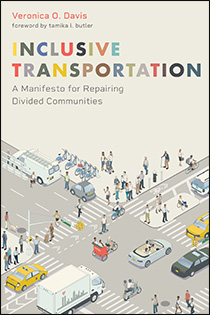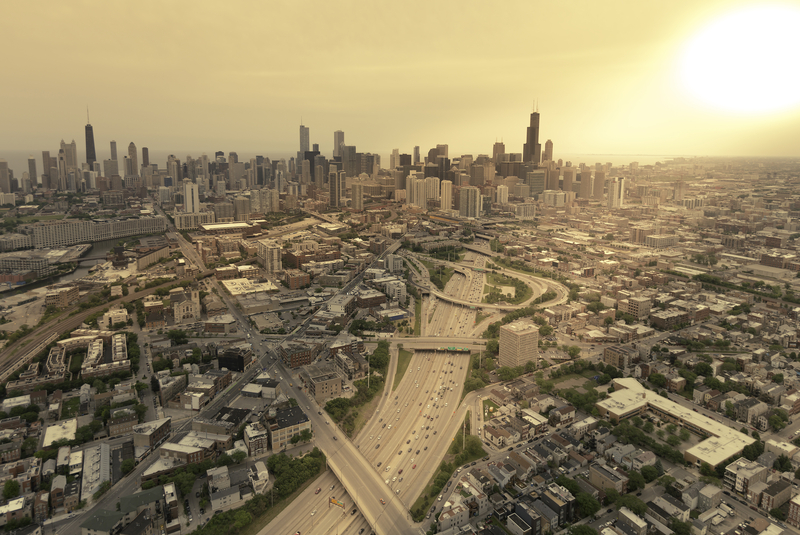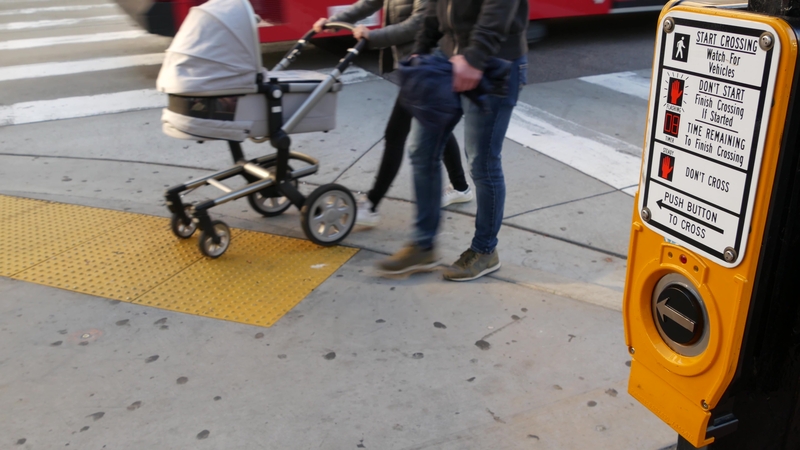
There is always a danger when people put their head above the parapet to voice an opinion: other people might not care for the opinion they are voicing.
Veronica O. Davis is a civil engineer, planner and self-identified transportation nerd who this year published a book. Inclusive Transportation: A Manifesto for Repairing Divided Communities discusses the need to rethink planning, to increase the diversity of those who make the decisions, to write the wrongs of historical injustice, and to look again at how to engage with the public. For more than a decade, Davis ran the transport engineering consultancy she co-founded, Nspiregreen, in Washington, DC, before taking up her current role as director, transportation and drainage operations for the City of Houston, Texas, in January 2021.
Like everyone else in transportation in the US, she is today working in an environment in which, for the best part of a century, cars have been prioritised above all other modes, most of the time. “All of us are are dealing with the system we inherited and every day you're making decisions to attempt to unravel that system, trying to be diligent, trying to show care,” she tells ITS International from her office in Houston. “There are times just because someone is the loudest doesn't mean they get what they want. And it's having the courage to make the decision that you think is the right decision in the end, and it's hard.”
“Tech companies lack an understanding of transportation..."
It's one thing writing a manifesto when you’re a private citizen, but Davis is now a public figure and Inclusive Transportation is out there. It is an excellent book: elegant, informative, practical, personal – and, at times, blunt. For example, she is sceptical of those promising to solve transportation problems through technology: “Tech companies lack an understanding of transportation…They will say they can do it faster than government. When there are no rules, it is easy to disrupt.” Also, she knows she won’t convince those who push back against the concept of equity: “White nationalists, who unfortunately often cloak themselves with Christian evangelism…have no desire to see communities reconnected, nor do they care if Black, Brown or low-income communities are destroyed to make way for new highways or roads”.

It's strong stuff. She credits the team at Island Press with “the great balance I had with my editors, of knowing when I needed to dance and when I needed to just say the thing that needed to be said”. She adds: “There were a lot of raw things that we took out.” (One would love to see those). But she believes her staff, stakeholders and bosses are used to the way she thinks. “Having to work with me for almost three years now, they know I'm very clear where I stand,” Davis says. “Because every day there are still things that come up that affect Black and Brown communities. And I'm very clear and pointed and I don't waver. There are times when you can have these ‘well, let's explore the possibilities [-type discussions]’ and then there is: ‘No, we are not doing this’.
“If you want to buy my books to burn them - have at it! Just buy them first”
She is active on social media and has been picked up by “some of the more conservative” feeds. “I think there's at least two or three that are like [she said] ‘cars are racist’ and I was like: ‘That's not what I said!’ So I feel like you've made it in this world when you’re on this kind of hitlist!”
(For the record, Davis is emphatic in the book: “It is not about taking away people’s freedom to decide to drive a car. It is about giving people the freedom to use other options to travel to work, play, shop and whatever else they need to do.”)
From the outset, Davis was determined to make Inclusive Transportation a practical volume.
“It was very intentional,” she nods. “One of the books that I love is called Think and Grow Rich by Napoleon Hill. And I keep a copy of it - especially when I was a business owner - I keep a copy by my desk and I love the way that it's structured: I'm going to give an idea. I'm going to give you an example of that idea. And now I want you to pause and reflect on that idea. The Seven Habits of Highly Effective People [by Stephen R. Covey] is the same thing: here's a concept, here's an example: now you try.” In short, they are books which are read – but then regularly referred to, rather than stuck away on a high shelf.
"Shouting to the world"
She chose the subtitle ‘A Manifesto for Repairing Divided Communities’ because “it really is just a shouting to the world of how, as an industry, we need to be better”.
The frameworks she lays out may have steps missing but she says: “That's the beauty of a framework: you can make it work for what you are doing and scale it to what you need - you don't have to go step by step. It's just to give you a place to start.”
Inclusive Transportation was the only book to be mentioned more than twice in our recent look at what transportation leaders were reading. Most of the feedback she’s had has been positive. But she laughs: “Hey, if it's negative and you want to buy my books to burn them - have at it! Just buy them first.”
Part of what makes the book so enjoyable is that Davis sees value in acknowledging her mistakes. “While I have plenty of career left, the Eastern Downtown Cycle Track project in Washington, DC, is one of my lower moments,” she writes.

There were multiple stakeholders on this bland-sounding project, but racial dynamics, the public meeting format – even the size of the meeting space itself, and an appearance from the library police (!) – were all contributing factors in it not going as well as Davis would have liked, shall we say. The episode is proof that public engagement on transport projects is very difficult to get right. To get the full story, read the book – it’s well worth it. She says now: “I think the successful projects are easy in a sense that you get it done and you think you know everything, but you do learn from - not so much failure - but the tough situations. I will say it has put me in a mindset now at public engagement that I don't get rattled at all.”
“Every day there are still things that come up that affect Black and Brown communities. And I'm very clear and pointed and I don't waver”
So there is learning to be had from our lowest moments. “I mean, I guess it could get lower but it was pretty low,” she laughs. “And because it was such a floor, it has made me better in dealing with the public even when there are challenging conversations to be had. What am I afraid of now? The library police aren't here!”
To some extent, the proposed bike lane in question served as a lightning rod for wider community angst: neighbourhoods are constantly changing and, for some, the pace of that change is worrying. This is a wider issue when it comes to transportation planning. With a little bit more work on that aspect with the community, she thinks the Eastern Downtown Cycle Track “probably still would have blown up, but it would have made it easier”.
Davis’ optimism shines through Inclusive Transportation, but even she questions whether the transportation industry wants to – or even can – change in the way she envisages: “You know, it's the question I ask because even in my role - even in the things that I deal with - there are parts of the industry that are holding on.” There is a push/pull between those who want something more dynamic than just tinkering around the fringes, against those who say: “No, this is fine. We've done some things around the edges.”
“Multimodal has become a dirty word"
“Multimodal has become a dirty word,” she suggests. “You say it and they're like, ‘but what about single-occupancy vehicles?’ You’re having to remind people that multimodal isn't just about a bike lane or sidewalk infrastructure.” Davis talks about the importance of road freight distribution and rail, for instance. But it’s hard to have a conversation that doesn’t involve automobiles. “’It's my American right to get in my vehicle and go where I want to go and you're not gonna tell me otherwise’ - it's very much that kind of holding on,” she says. “And car companies have done fabulous advertising, right? And that's why we feel like we have to own certain cars so that we can be happy on Christmas, when the car is there with a big bow, or it’s a status symbol - it's all of those things.”
Younger Americans in urban areas are not necessarily quite so on board with that idea. Davis recalls: “I got my driver's licence two days after my birthday - and I felt like that was too long. These young kids, they're like: ‘Ah, well, okay, maybe’. So there's so many people in their twenties, even in car-centric cities, that don't have a driver's licence because the younger generation does not want that. And as an industry, we are not even attempting to accommodate that.”

She believes there is hope, however. “The Bipartisan Infrastructure Law is probably one of the most progressive pieces of legislation that we've had,” Davis says. “Even just beyond the funding, at its core, the fact that there is money specifically for areas of persistent poverty; reconnecting communities is absolutely a recognition of ‘we have done harm and now we will attempt to mitigate or undo or somehow fix some of that harm’. The fact that it recognises Nacto [National Association of City Transportation Officials] as design standards opens up for cities to be able to now design federally-funded projects to Nacto standards versus Aashto [American Association of State Highway and Transportation Officials] standards. I think in the next five to 10 years, when those projects are completed, we will see the overall impact of the Bipartisan Infrastructure Law.”
Her other piece of hope for change in the way the US designs and operates its transportation systems is, at first glance, a surprising one: insurance companies. “They're my sleeper pick, if you will,” Davis smiles. “At the end of the day, the goal of insurance isn't to pay out – it is to collect your premiums and use those premiums to invest. But when you're looking at crashes, and fatalities and serious injuries, and the cost associated with those, the property damage, it gets to a point that insurance companies are going to say: ‘Oh no, this isn't going to work’. Or you know, they may say: ‘Based on the type of vehicle you have, we we're not going to insure that vehicle’. I'm not going to say it's going to happen overnight. But I think that they are going to be an interesting kind of ally in change.”
Insurance companies as the good guys? Who’d have thought it? “Well it's, you know, the enemy of my enemy is my friend!” she laughs.
"You look at most US cities and you see cars, you see congestion"
Davis weaves personal experience throughout Inclusive Transportation, for instance telling her family story in the book, including how her grandparents lost their home to make way for a freeway in Baton Rouge, Louisiana. She first talked about this at a planning conference in that city. “And what I found is, particularly at that conference, it really helped people connect,” she says. More importantly, she thinks it brings the past closer to people, rather than being something that happened long ago and ‘over there’. “It puts some context to the timeline for when a lot of this happened,” she explains. “When we go into communities, and we're doing projects in these neighbourhoods that were impacted by the highways, you have to remember there are people in their 70s - maybe even their 60s - who remember what it was before. Hopefully as practitioners, as we work in neighbourhoods, we remember that context.”
Looking at photographs from many US cities in the 1950s you see really wide sidewalks, she continues. “You see thriving communities, you see people walking, playing, being safe. And now you look at most US cities and you see cars, you see congestion. Even most city downtowns are on the high injury network because you have high volumes of people trying to walk, and a whole bunch of vehicles getting frustrated. So there really has to be a better way.”
One final question: when's her next book? “I don’t know,” Davis laughs. “That one was a labour of love. I don't know. We'll see.”











